Did you know that this was the final painting that High Renaissance master Raphael was able to add to his impressive oeuvre?
In this post, you’ll discover the ultimate list of facts about the Transfiguration by Raphael, one of his absolute masterpieces!
1. Raphael worked on it until his death
Raphael is considered to be one of the ultimate masters of the High Renaissance, and the Transfiguration is considered to be one of his ultimate masterpieces.
He started working on it in the year 1516 and applied the final brushstrokes in his life to this painting. He died of a sudden fever on April 6, 1520.
2. The Transfiguration is a massive painting
If you take a look at the painting, you will understand why it took nearly 4 years to complete this painting as it’s really massive and was intended to become an altarpiece.
It has dimensions of 405 × 278 centimeters (159 × 109 inches).

3. It hangs in the Vatican Museum in Rome
Shortly after it was completed in 1520, the painting served its purpose as an altarpiece and was installed in the San Pietro in Montorio.
This church in Rome is famous for the Tempietto in its courtyard, which was designed by Donato Bramante, who also created the initial design of the St Peter’s Basilica in Rome, in the early 16th century. This decorative tomb is considered to be one of the most “harmonious structures of the Renaissance.”
After a short stay in France during the French Revolution and Period under Napoleon, it was moved back to Rome and can now be found in the “Pinacoteca Vaticana,” the main gallery of the Vatican Museum.
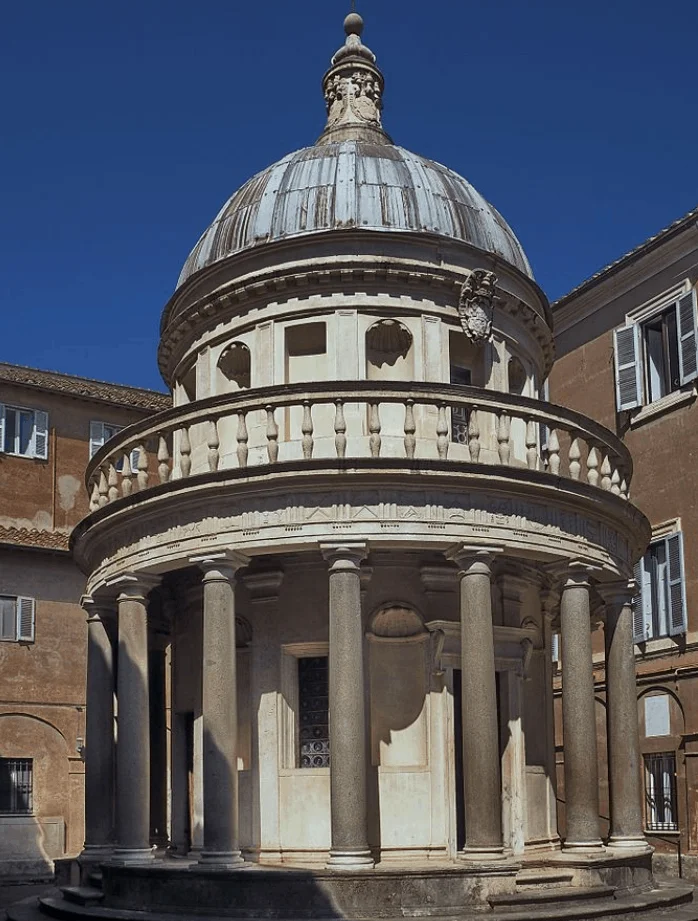
4. It was commissioned by a Cardinal who became the Pope

The painting was commissioned by Cardinal Giulio de Medici, who was a cousin of Pope Leo X (1513-1521) and his chief advisor.
The Cardinal would eventually become Pope Clement VII (1523–1534). he would eventually be dubbed as “The most unfortunate of the Popes,” mainly because he had to deal with a lot of political, religious, and military problems which he didn’t create himself.
Being able to hang out with Raphael in his glory days and order a painting from him doesn’t sound too unfortunate, right?
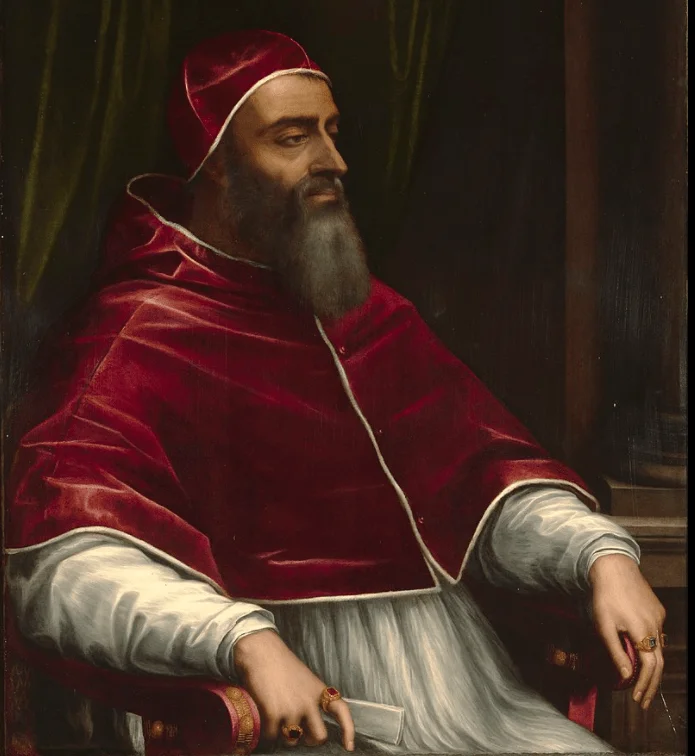
5. It was supposed to decorate a cathedral in France
The commission came when the Cardinal was entertaining the archbishopric of Narbonne, a city in southern France. This means that the painting was commissioned to eventually decorate the Cathedral of Narbonne.
By the time the painting was finished, Raphael had died and Pope Clement VII decided to simply keep it and hang it in his church in Rome.
He must have been pretty amazed at the result, don’t you think?
6. It was considered to be the most famous painting in the world for centuries
The moment that the painting was completed, it had been described by dozens of critics, going back to the 1520s. Most of them instantly categorized it as Raphael’s ultimate masterpiece.
It was the Spanish humanist Pablo de Céspedes who called it the “world’s most famous oil painting” for the first time in the year 1577.
It held this status until the late 19th century. After this, the role of Raphael as one of the ultimate masters declined, and many critics thought the composition was too complex and chaotic.
Therefore, other works such as, for example, The Mona Lisa by Leonardo da Vinci, which is much easier to recognize and not so chaotic, retained their status, while the Transfiguration declined.
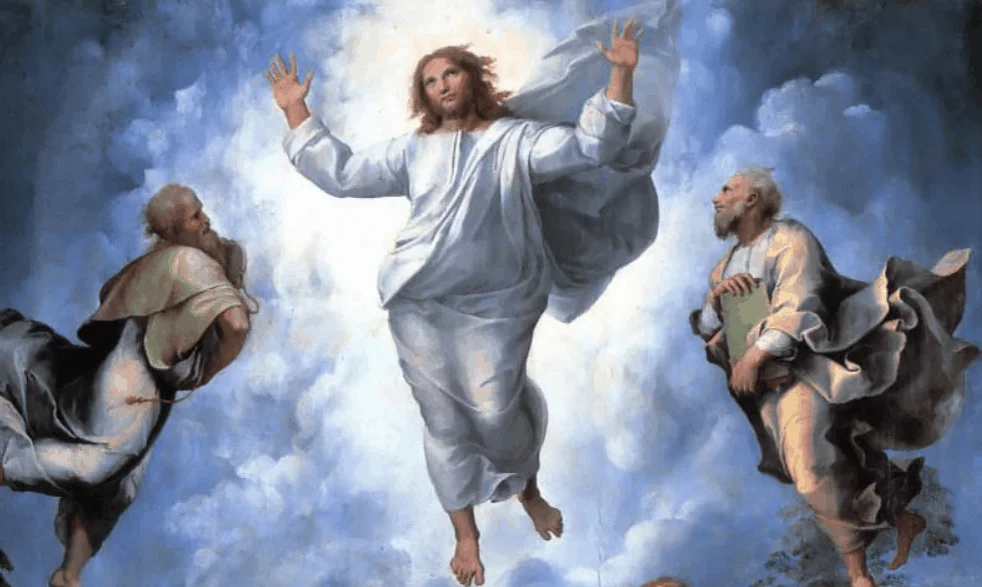
7. It revived an old rivalry between 2 masters
The Transfiguration wasn’t the only painting that Cardinal Giulio de Medici commissioned at that time. He also commissioned The Raising of Lazarus, which was completed by Sebastiano del Piombo.
What’s more important is that Michelangelo was the one who created the drawings for this painting. Raphael knew this which means the Cardinal had just revived the rivalry between the two artists which started when Raphael was painting The School of Athens in the Raphael Rooms and Michelangelo was painting The Creation of Adam in the Sistine Chapel!
Both paintings were supposed to decorate the altar of the Cathedral in Narbonne. A copy of The Raising of Lazarus now hangs there while the original can be found at the National Gallery in London.
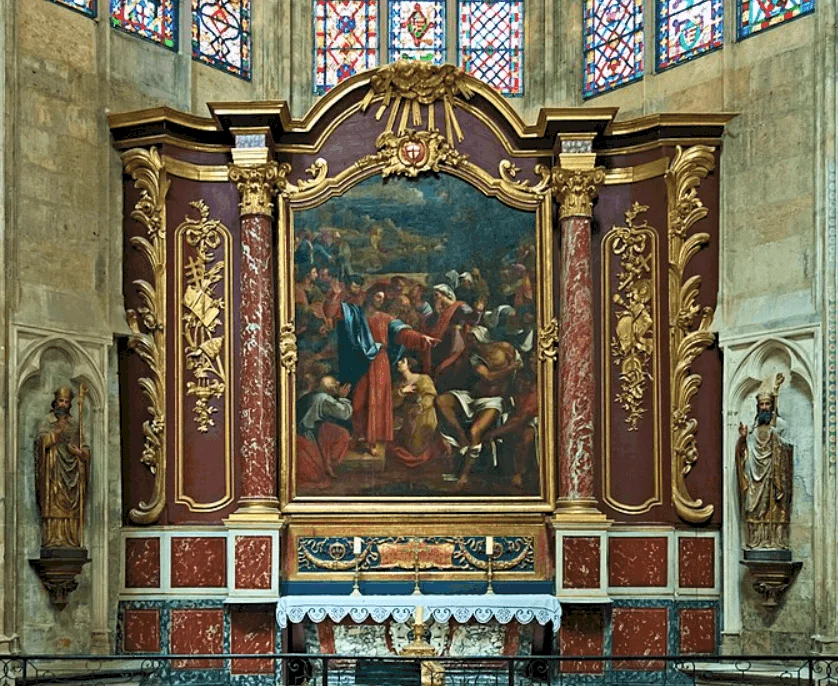
8. A “Modello” shows that Raphael put in some extra effort
One of the most interesting facts about The Transfiguration by Raphael is that he clearly put in extra effort because he knew that Michelangelo had worked on drawings of the other commission.
He saw it as a battle, which is emphasized by the fact that he added another theme to the painting, that of the healing of the boy at the bottom, and 19 (!) more figures after the Raising of Lazarus was completed in October 1518.
In the Modello of the painting, it’s clear that it would have been much simpler than the eventual result.
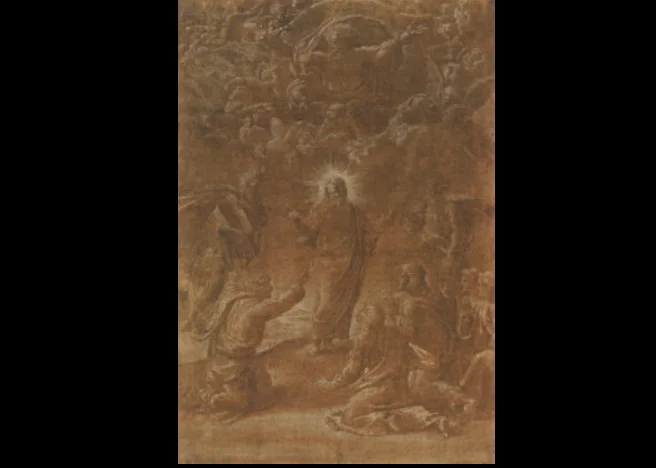
9. Why is there an epileptic boy in the bottom right corner?
This also explains why Raphael added another theme to the painting, that of a boy suffering from an epileptic attack, something that wasn’t understood by critics for 5 centuries.
This has finally been explained by amateur art historian and Philadelphia cardiologist Gordon Bendersky, who finally explains the mystery.
Instead of the boy suffering from an epileptic attack, it depicts the moment just after he’s healed. The open mouth doesn’t reflect the reaction to the attack, but rather the release of the evil demon inside, which is what people in the 16th century believed happened.
Therefore, the two scenes aren’t divided into an upper and lower half as some critics claimed but actually complement each other because it depicts Jesus who just healed the boy.
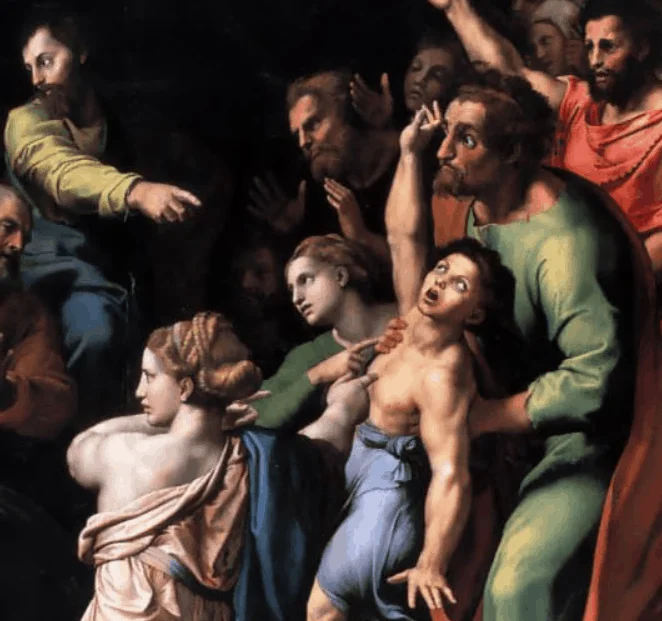
10. Was Raphael able to complete the entire painting?
Because of the fact that he died while he was apparently still working on the painting, it has always been a discussion as to whether or not Raphael painted it completely, or if some of his students helped him.
A thorough cleaning, which took place between 1972 and 1976, revealed that Raphael painted just about everything, except for some figures in the lower-left corner. All the rest is the work of Raphael!
11. It was on display at the Louvre, just after the museum had opened
The Louvre in Paris opened its doors in the year 1793, and just 4 years after this event, the most famous painting in the world at that time decorated the walls of the newly opened museum.
It wasn’t until the defeat of Napoleon, and after the Treaty of Paris was signed in 1815, that The Transfiguration was finally moved back to the Vatican and more specifically, the Borgia Apartment in the Apostolic Palace, along with dozens of other famous works of the Renaissance masters.
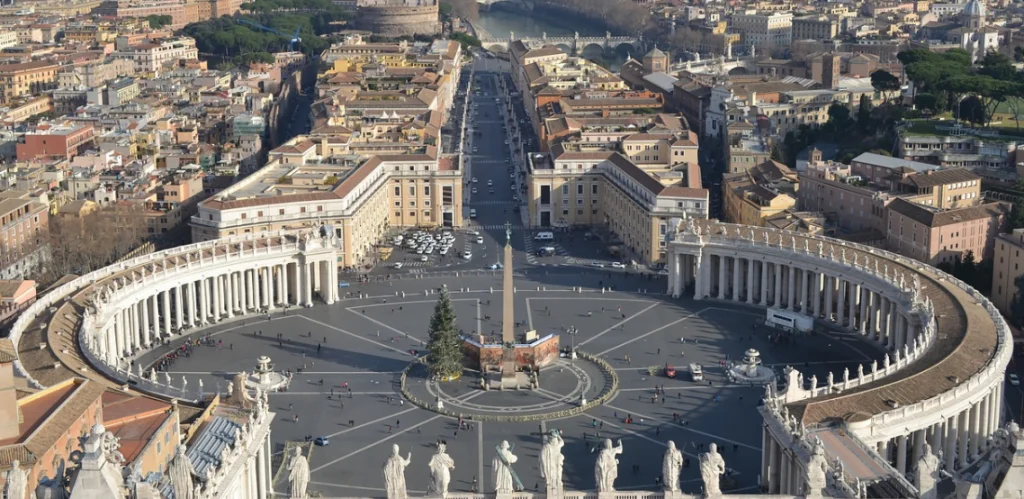
12. A famous replica decorates the altar of the St Peter’s Basilica
The original Transfiguration painting isn’t the only copy that decorates the Vatican Museums. A famous copy of the painting actually decorates the altar of the largest church in the world, the St Peter’s Basilica!
The painting has been copied at least 68 times between its creation and 1913, along with at least 52 illustrations and engravings.

